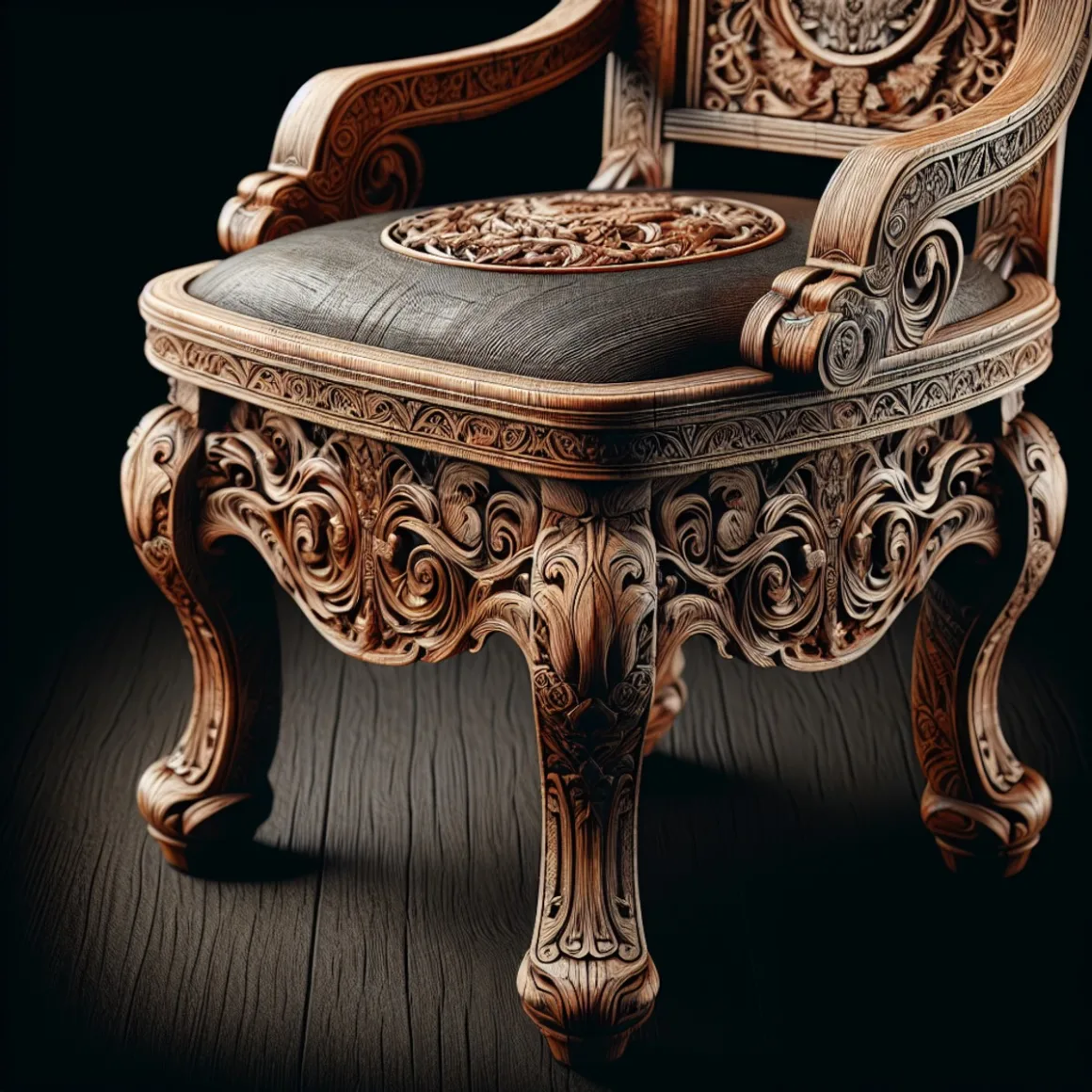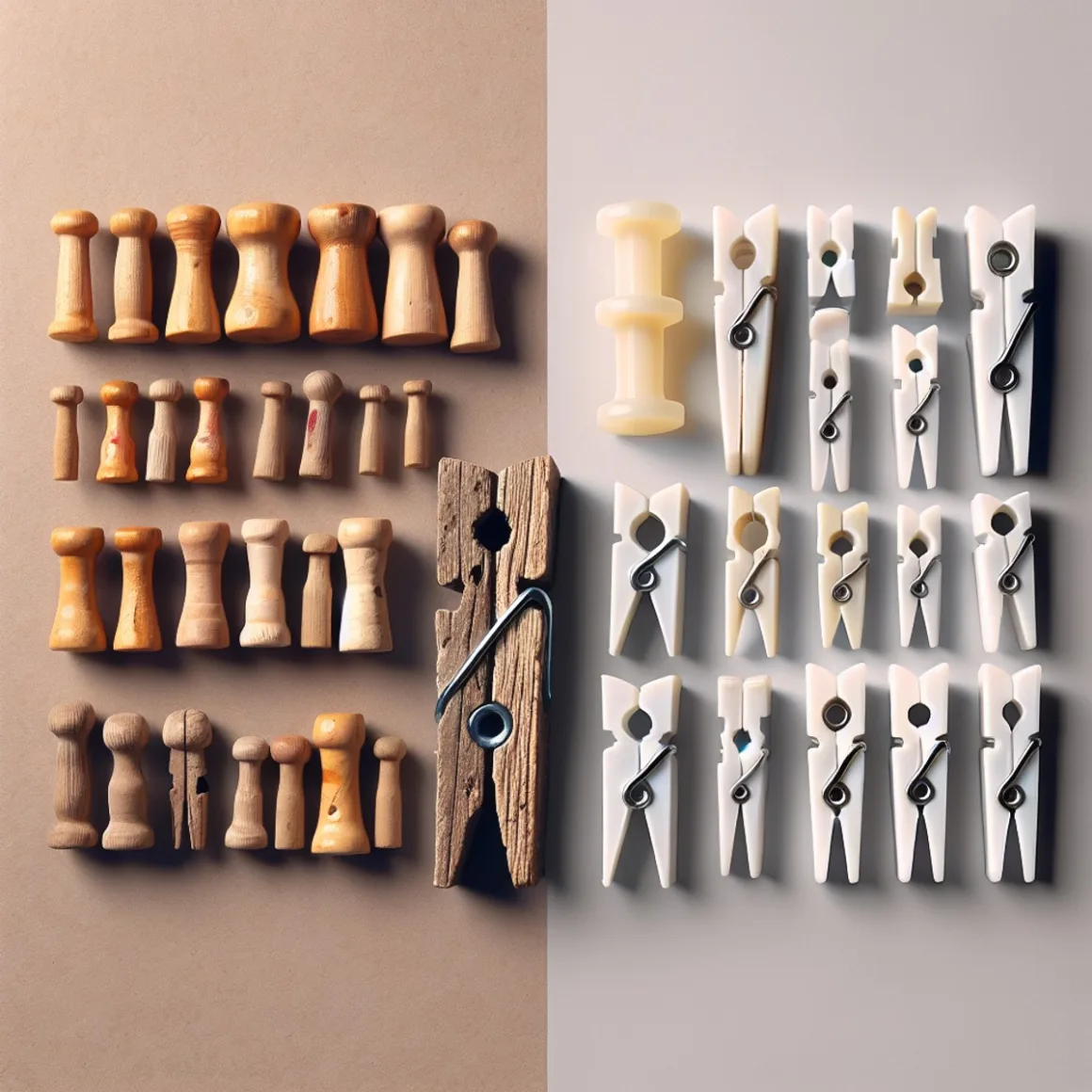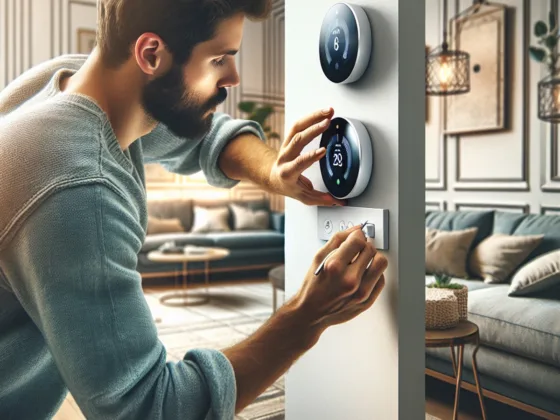Table of Contents Show
Introduction
If you love old craftsmanship, you’ll find antique chair identification to be a fascinating hobby. It’s not just about owning something old; it’s about uncovering the story behind every little detail. Collectors, enthusiasts, and buyers all enjoy this journey of discovery because they know that figuring out the age of an antique chair is crucial.
You might wonder why the age of a chair is so important. Well, it can make a big difference in how much it’s worth. Generally, older chairs are more valuable – and that goes for both their monetary value and the sentimental attachment people feel towards them.
Another reason why age matters is because it affects how authentic a chair is. The true appeal of an antique chair lies in its real historical significance – it’s like having a piece of the past right in front of you.
This guide is here to help you along as you explore this fascinating world. We’ll start by explaining what makes a chair an antique and then move on to the different ways chairs were put together over the years. We’ll talk about the materials that were used, the different design styles that were popular at different times, and much more.
By the time you finish reading this comprehensive guide, you’ll have all the knowledge you need to confidently estimate when an antique chair was made. So let’s get started and uncover some amazing stories together!

1. Understanding Antique Chairs
Defining an antique chair is an art in itself. An antique chair, typically over a century old, oozes charm and character that makes it irresistible to furniture lovers and collectors alike. These chairs are more than mere seating arrangements; they tell tales of the era they belong to, making them treasured possessions.
Popular Types of Antique Chairs
Exploring the vast world of antique chairs, we find various popular types, each with their unique features and historical significance.
- Windsor Chairs: Originated in England during the 18th century, these chairs are recognized by their spindle backs and often, saddle-shaped seats.
- Chippendale Chairs: Named after renowned English cabinetmaker Thomas Chippendale, these chairs are known for their intricate designs and dark wood.
- Shaker Chairs: Simplicity is key for Shaker-style chairs. Popularized in the 19th century by the Shaker community, they feature clean lines and minimal decoration.
- Mission Chairs: Influenced by Spanish missions in California, these chairs often have a square or rectangular design with horizontal and vertical lines.
Notable Chair Designers and Manufacturers
Furniture making is not just a craft; it’s a creation process where designers breathe life into wood pieces. Many notable chair designers and manufacturers have left their indelible mark on this craft.
- Gustav Stickley, an American furniture manufacturer, revolutionized the industry with his simple yet elegant mission-style furniture.
- Charles and Ray Eames, a dynamic duo from mid-20th century America, introduced innovative materials like molded plywood and fiberglass into chair design.
- Michael Thonet, an Austrian craftsman known for his bentwood furniture designs, created iconic pieces like the Vienna café chair that are still celebrated today.
These craftsmen defined eras with their innovative designs and craftsmanship skills. They have made significant contributions to the furniture-making craft, shaping the way we perceive and appreciate antique chairs today.
As we dive deeper into this guide, we’ll learn more about assessing the age of antique chairs and different design eras, helping us appreciate these timeless treasures even more.
2. Assessing Antique Chair Age
To identify the age of an antique chair, it’s important to examine the different joinery techniques used in its construction. These techniques can provide valuable clues about when and where the chair was made. In this section, we’ll take a closer look at some of the most common joinery techniques found in antique chairs.
2.1. Joinery Techniques in Antique Chairs
Dovetail Joints
One of the most reliable indicators of age is the presence of dovetail joints in furniture. These joints are created by interlocking “tails” and “pins” and were primarily made by hand before the late 19th century. Here’s what you need to know about dovetail joints:
- Hand-Cut Dovetails:
- Appearing before the mid-1800s
- Characterized by their varied sizes and asymmetry
- Exhibit chisel marks when examined closely
- Machine-Cut Dovetails:
- Emerged with the advent of industrial tools around the 1860s
- Exhibit uniformity and precision
- Typically narrower than hand-cut counterparts

Mortise and Tenon Joints
Another common type of joint found in antique chairs is the mortise and tenon joint. This joint consists of a “tenon” on one piece fitting snugly into a “mortise” hole on another piece. Here’s what you need to know about mortise and tenon joints:
- Early Mortise and Tenon:
- Simple forms are seen in early furniture
- Larger, rougher cuts due to less sophisticated tools
- Later Mortise and Tenon:
- More complex designs for added strength
- Smoother finishes indicate advancements in woodworking technology

Pegged Joints
Pegged or dowel joints were yet another method used throughout history but became more prevalent during certain periods. Early pegs were often whittled by hand and inserted into holes to secure two pieces of wood together – an approach favored for its simplicity and effectiveness. Here’s what you need to know about pegged joints:
- Handmade Pegs:
- Irregular shapes due to handcrafting
- Often found in pieces pre-dating the mid-19th century
- Machine-Made Pegs:
- Uniform appearance
- Indicate manufacturing after machinery became commonplace

By scrutinizing these joinery techniques with an informed eye, enthusiasts can assess the authenticity of antique furniture with greater confidence. This forensic approach to identifying antique chair joinery techniques not only enriches one’s appreciation for the craft but also serves as a critical step in verifying a chair’s historical narrative.
2.2. Materials Used in Antique Chairs
No two pieces of wood are identical and it’s this uniqueness that sets antique chairs apart. Identifying the type of wood used can help determine the age of an antique chair, shedding light on its authenticity and historical significance.
Did you know? The age of an antique chair is a critical element in assessing its value. Numerous valuable pieces have been identified as replicas or even forgeries due to misattributed time periods.
One of the fascinating aspects of antique furniture is how the materials used have evolved over time. Certain wood species or fabric choices may align with specific eras or regional preferences, giving clues about an antique chair’s origins.
Wood Species
Wood species used in furniture making varied depending on the time period. For example:
- Oak: Widely used from the early 16th century through to the mid-17th century, oak was a popular choice owing to its durability and availability.
- Walnut: From the late 17th century to the mid-18th century, walnut began taking center stage, prized for its rich color and intricate grain.
- Mahogany: The late 18th century welcomed mahogany into the limelight, favored for its straight grain and ability to be carved with intricate details.
These variances in wood usage provide insight into the potential age of a piece, thus helping us identify antique chair age.
Fabric Choices
Upholstery trends have also changed over the centuries. Early chairs were rarely upholstered but as we moved into periods like Victorian times, fabrics became increasingly popular. Velvet, silk, and brocade were popular options for affluent homes while less expensive cottons were common in more modest settings.
Understanding these shifts in material usage is vital when assessing the authenticity of antique furniture. It helps not only in dating a piece but also in appreciating its journey through time.
3. Exploring Antique Chair Design Eras
Delving into the world of antique chair design eras is like going back in time and exploring different periods of history. Each era has its own unique style, influenced by the society, economy, and culture of that time.
Renaissance Revival (late 1800s)
- Stylistic Elements: These chairs are heavily decorated with classical designs.
- Influences: They take inspiration from the grandeur of the Italian Renaissance.
- Wood Finishes: To give them an old-fashioned look, they are stained with dark colors and coated with varnish.
Victorian Era (mid to late 1800s)
- Stylistic Elements: Chairs from this era have intricate carvings, luxurious upholstery, and curved shapes.
- Influences: They are named after Queen Victoria and represent the preferences of the British monarchy.
- Wood Finishes: They are often finished with rich mahogany or walnut stains.
Arts and Crafts Movement (late 1800s to early 1900s)
- Stylistic Elements: These chairs are known for their simple designs, straight lines, and minimal decorations.
- Influences: They were created as a response to industrialization, emphasizing the importance of skilled craftsmanship.
- Wood Finishes: Natural oils and stains were used to highlight the beauty of the wood grain.
Art Nouveau (late 1800s to early 1900s)
- Stylistic Elements: Chairs from this period feature flowing lines, floral patterns, and asymmetrical shapes.
- Influences: The designs were inspired by nature and seen as a form of artistic rebellion.
- Wood Finishes: Lighter stains were applied to enhance the intricate inlays and details.
Art Deco (1920s to 1930s)
- Stylistic Elements: These chairs have bold geometric patterns, vibrant colors, and sleek forms.
- Influences: They embraced the modern era with their use of luxurious materials and stylized designs.
- Wood Finishes: A high-gloss lacquer finish was used to create a polished and glamorous appearance.
Understanding wood finishes in antique furniture can provide valuable information about its origins. Wood finishes have changed over time, serving both practical and aesthetic purposes. Initially used to protect the wood from damage caused by moisture and insects, finishes also enhance its natural beauty.
“Wood finishes in antique furniture have evolved over time, reflecting both functional and decorative needs. From traditional shellac to modern synthetic lacquers, these finishes contribute to the overall look and feel of a piece.”
Shellac, made from beetle secretions mixed with alcohol, was commonly used until the early 20th century when it was mostly replaced by more durable synthetic lacquers. Similarly, oil-based varnishes were used to add depth and shine to wooden surfaces but required long drying times.
The way these finishes were applied can also indicate the age of a chair. Older varnishes often show brush strokes, while spray applications became more common in later years. Different painting techniques were also popular during different periods, such as the use of milk paints in colonial times or the adoption of Chinoiserie styles.
By carefully examining these design elements and wood finishes, one can start uncovering the history behind an antique chair. Each era has its own stories to tell through its craftsmanship and style.
4. How to Recognize Different Styles of Antique Chairs
Antique chairs come in a variety of styles, each with its own unique features and history. If you’re interested in identifying vintage furniture styles, here are some key characteristics to look out for:
Queen Anne (1702–1760)
- Graceful curves, such as cabriole legs with distinctive knees and ankles
- Splat back with an elegant vase-shape
- Often made from walnut, giving them an air of elegance
Chippendale (1750–1790)
- Elaborate designs with interlaced ribbon backs
- Intricate carvings inspired by Gothic or Chinese motifs
- Claw-and-ball feet for added ornamentation
Hepplewhite (1780–1810)
- Simple yet elegant style
- Shield-shaped or oval backs
- Straight tapered legs and contrast inlays
- Typically crafted from mahogany
Sheraton (1790–1820)
- Favoring straight lines and classical ornamentation like urns and swags
- Reeded or turned legs supporting seats adorned with delicate patterns
Empire Style (1800–1815)
- Reflecting Napoleonic grandeur with robust construction
- Heavy ornamentation such as animal paw feet or winged figures
- Often made from dark mahogany for a regal appearance
Victorian (1837–1901)
- Known for their opulence and luxuriousness
- Plush upholstery combined with dark woods like mahogany or walnut
- Balloon backs, button tufting, and ornate carvings as design elements
Arts & Crafts (1880–1920)
- Embracing simplicity and craftsmanship
- Straightforward designs in oak with visible joinery
- Use of natural materials and earthy tones
Art Nouveau (1890–1910)
- Characterized by flowing lines and organic shapes
- Often featuring motifs inspired by nature, such as thistles or peacocks
- Sinuous wooden frames add to their artistic appeal
Each antique chair style has its own unique characteristics that tell a story about the time it was created. Whether it’s the intricate carvings of a Chippendale chair or the sleek lines of an Art Nouveau piece, these design elements can provide valuable insights into the history of a chair.
When trying to identify an antique chair’s style, it’s important to look at every detail—from the shape of its legs to the design of its backrest. These chairs are more than just functional furniture; they are symbols of craftsmanship and artistry from a bygone era.
In the next section, we’ll explore the different materials used in antique chairs and how upholstery can further reveal their age and origin.
5. Evaluating Antique Chair Materials and Upholstery
When you’re exploring the world of antique chairs, understanding the materials used in their construction and the upholstery covering them can reveal fascinating insights about their history. The types of materials and fabrics chosen for an antique chair can tell you a lot about the time period in which it was made and its authenticity.
Structural Materials: Discovering the Bones of an Antique Chair
The type of wood used in the frame of an antique chair can provide clues about its age and origin. Different woods were favored during different time periods for their durability, appearance, and ease of working with. Here are some commonly encountered woods in antique chairs:
- Oak: Known for its strength and abundance, oak was a popular choice for English and American furniture starting from the 17th century.
- Mahogany: With its deep, reddish-brown hue, mahogany gained popularity in fine furniture during the 18th century—finding mahogany in a chair suggests it may belong to this era.
- Walnut: Valued for its attractive grain patterns, walnut was widely used in European and American chairs from the 17th to 18th centuries.
- Pine: Although not as prestigious as hardwoods, pine was commonly used in hidden areas or country-style furniture due to its affordability.
In addition to wood, metals like brass or iron were sometimes incorporated into antique chairs, especially in industrial-style pieces or as reinforcements in joints. The presence of metal elements can also offer clues about the chair’s time period and origin.
Uncovering Clues Through Upholstery: What Lies Beneath the Surface
The upholstery of an antique chair is another important aspect to consider when evaluating its age and authenticity. Upholstery techniques evolved over different historical periods, influenced by changing fashion trends and practical needs. By understanding these changes, you can determine whether the upholstery on a chair is original or has been replaced.
Here are some key points to look for when examining the upholstery of vintage furniture:
- Stuffing Materials: Older chairs may have stuffing made from natural fibers like horsehair or straw, while synthetic materials became more common in later years.
- Fabric Choices: Luxury pieces often featured silk or velvet upholstery, while more everyday furniture was typically covered in practical fabrics like linen.
- Seam Styles: Hand-stitched patterns indicate pre-industrial craftsmanship, while machine-stitched seams suggest that the chair has been reupholstered at a later date.
How to Assess Antique Chair Materials and Upholstery
When evaluating an antique chair’s materials and upholstery, it’s important to take a close look at the following:
- Consistency of Wear: Original materials will exhibit uniform signs of aging and wear throughout the chair.
- Underside Examination: Inspect the underside of the chair for any evidence of previous upholstery work, such as multiple sets of holes from earlier tacks or nails.
By paying attention to these details, you can gather valuable information about an antique chair’s past. But don’t get too comfortable just yet—there’s still more to discover as we continue our journey through vintage charm and character.
6. Understanding the Significance of Vintage Chair Types
Vintage chair types have their own importance and appeal in the world of antiques. These chairs belong to different functional categories, which adds to their charm. Here are some of these categories:
Dining Chairs
Traditionally, these chairs are designed with a comfortable backrest and usually don’t have arms. They are made to go well with dining tables, creating a cohesive look. Some examples of dining chair styles include Chippendale and Queen Anne.
Armchairs
These chairs come with armrests for extra comfort and have been popular since the beginning of seating furniture. They are great for relaxing or reading and have a distinct, powerful presence. The Louis XVI armchair is a famous example of an armchair.
Occasional Accent Pieces
As the name suggests, these chairs are not meant for regular use. They are more like decorative pieces or are used occasionally when guests need seating. Some notable examples of occasional accent pieces include Bergere and slipper chairs.
The evolution of these chair types shows how seating habits and social norms have changed over time. They give us not just furniture, but also historical artifacts that tell interesting stories from different periods.
For example, the rise of imposing armchairs in homes signaled a shift towards more leisurely indoor activities during the 17th century. On the other hand, the popularity of ornate accent chairs during the Victorian era reflected a desire for luxury and showiness.
Similarly, dining chairs evolved from simple wooden stools to grand upholstered pieces as dining became less about just eating and more about socializing.
From this perspective, antique chairs become more than just objects; they become storytellers whispering secrets from centuries ago. With each design change or choice of material, we can see glimpses of the social and economic conditions, aesthetic preferences, and lifestyle shifts that influenced each era.
As we continue with this guide, let’s keep in mind that each chair has a historical significance, and knowing their types is just one piece of the puzzle.
7. Understanding Antique Chair History Through Patina and Wear
Antique chairs have a fascinating story to tell, and you can uncover their secrets by examining the subtle details of their patina and wear. These features are not just imperfections, but valuable clues that reveal the chair’s age and authenticity.
Antique Chair Patina: A Sign of Genuine Age
One of the most telling characteristics of an antique chair is its patina, which refers to the changes that occur on the surface of the wood over time. Here are some key aspects of chair patina to look out for:
- Subtle Color Variations: As a chair ages, its finish undergoes a natural transformation, resulting in unique color variations. These hues can provide insights into the original type of finish used and help determine the chair’s era.
- Texture Changes: The texture of the wood can also indicate its age. Older chairs often have a smoothness that comes from years of use and cleaning, making them distinct from newer pieces.
Wear Patterns on Furniture: Clues About Usage and Aging
Another aspect to consider when examining antique chairs is their wear patterns, which offer valuable information about how they were used and how time has affected them:
- Legitimate Signs of Wear: Authentic wear tends to appear consistently in areas that come into frequent contact with people. For example, armrests may show signs of rubbing from elbows, while seat edges might display evidence of numerous sittings and risings.
- Irregularities in Wear: Chairs with uneven or strategically worn spots may indicate that someone intentionally distressed them to create a false sense of age.
Tips for Analyzing Antique Chair Patina and Wear
To truly understand an antique chair’s history through its patina and wear patterns, keep these additional factors in mind:
- Observing Fabric Fading: If the chair still retains its original upholstery, examine any fading in the fabric. Genuine aging typically results in uniform fading due to prolonged exposure to sunlight.
- Detecting Repairs or Replacements: While repairs can be a sign of proper maintenance, they can also affect how old a chair appears. Matching the patina of new components with the existing ones requires skill and expertise.
Remember, while reproductions can imitate the designs of antique chairs, they often cannot replicate the intricate details that come from years of human interaction. The genuine charm captured in the chair’s patina and wear patterns serves as a testament to its journey through time.
8. Researching Provenance and Historical Documentation for Antique Chairs
When it comes to unraveling the story of an antique chair, few methods are as telling as delving into its provenance. The term “antique chair provenance” refers to the chronicle of ownership from the time a chair was crafted to its current keeper. This lineage is not just a romantic notion; it’s a tapestry woven with threads of historical significance that can authenticate a piece’s age and origins.
The Value of Provenance
- Authenticity: Provenance acts as a form of verification, supporting claims about the age and origin of a chair.
- Historical Context: Knowing the lineage provides insight into the societal and economic conditions under which the chair was used.
- Market Value: Documented provenance can significantly increase an antique chair’s market value.
Uncovering Historical Documentation
Provenance research involves hunting down evidence such as:
- Auction Records: Past sales data might reveal details about previous owners and valuations.
- Estate Inventories: Legal documents listing possessions during probate can pinpoint an item’s existence at a certain time.
- Manufacturer Archives: Records kept by furniture makers may list who ordered or purchased a piece.
Expert Consultation
Consulting with historians, archivists, or specialized antique dealers can provide direction on where to find pertinent documents. These professionals may have access to private databases or archives not readily available to the public.
Case in Point
Imagine discovering that your elegant wingback chair once graced the parlor of a renowned historical figure. Such a revelation could catapult an otherwise ordinary-looking chair into the realm of treasured heirlooms.
9. Resources for Further Antique Chair Identification
For enthusiasts eager to deepen their knowledge of antique chair identification, a wealth of resources is available. Here are some recommended avenues for additional information:
- “Identifying American Furniture: A Pictorial Guide to Styles and Terms Colonial to Contemporary” by Milo M. Naeve
- “Field Guide to American Antique Furniture” by Joseph T. Butler
- “The Bulfinch Anatomy of Antique Furniture: An Illustrated Guide to Identifying Period, Detail, and Design” by Tim Forrest and Paul Atterbury
These texts are rich with imagery and historical context, offering readers a comprehensive look into various furniture styles and periods.
Online Platforms
- The Metropolitan Museum of Art’s Collection Database
- Antiques Navigator
Websites like these provide extensive digital archives and articles, where one can research specific styles, materials, and construction techniques pertinent to antique chairs.
Expert Communities
- Antique Forums such as Antiquers.com or the Furniture section on Reddit’s r/Antiques
- Professional Appraisers often have websites or online consultation services
Engaging with knowledgeable communities offers the chance to ask questions, share photos for identification help, and gain insights from experienced collectors and professionals.
By tapping into these resources, readers can refine their eye for detail and expand their understanding of the artistry behind antique chairs. With each book read, forum discussion joined, or article perused, the layers of history behind each unique chair begin to unfold.
Conclusion
Armed with the knowledge from this guide, it’s time to put that expertise to work. Undoubtedly, identifying an antique chair’s time period is truly a fascinating journey. It’s more than just determining a chair’s monetary worth. It brings to life stories of artistry, craftsmanship, and periods of history.
So, step into that antique store or peer at that estate sale find with fresh eyes. Delve into the intricate joinery techniques, discern the materials used, and decode the design eras. Every chair has a tale to tell – whether it hails from a grand Victorian parlour or the simplicity of an early American homestead.
Remember:
- The historical value of an antique chair cannot be understated; it’s about appreciating the evolution of furniture design and acknowledging the craftsmanship of bygone eras.
- Acknowledge the diversity in styles and craftsmanship as they are all part of our rich furniture history.
Antique chair identification is not just for collectors or enthusiasts. Anyone with an interest in history, design, or storytelling can find joy in this exploration. So go forth on your adventure to identify the time period of antique chairs. Who knows? You might unearth a gem with not only monetary value but a captivating story to boot!
FAQs(Frequently Asked Questions)
Defining an antique chair is an art in itself. An antique chair is typically considered to be a piece of furniture that is at least 100 years old.
To identify the age of an antique chair, it’s important to examine joinery techniques, materials used, wood species, and fabric choices.
Some popular design eras of antique chairs include the Renaissance Revival, Victorian Era, Arts and Crafts Movement, Art Nouveau, and Art Deco.
Different styles of antique chairs can be recognized by their unique stylistic elements and design characteristics, such as graceful curves, elaborate designs, simplicity, and opulence.
When evaluating antique chair materials and upholstery, it’s important to consider the structural materials used in the frame, uncover clues through upholstery, and assess the overall quality and condition.
Provenance acts as a form of verification for authenticity and historical documentation provides evidence of the chair’s origin, ownership history, and significance.
Enthusiasts can find further resources for antique chair identification in authoritative books, online platforms such as museum databases, and expert communities like antique forums.
Citation
- sayerj1. (2023, May 18). How to Identify, Date & Value Antique Chairs: A Beginner’s Guide – Paolo Moschino. Paolo Moschino. https://www.paolomoschino.com/how-to-identify-date-value-antique-chairs-a-beginners-guide/
- Melissa. (2022, October 11). How to Identify Antique Chairs, A Comprehensive Guide | Museum Quality Restoration Services. Museum Quality Restoration Services | Palm Desert Furniture & Antique Restoration. https://www.museumqualityrestorationservices.com/how-to-identify-antique-chairs-a-comprehensive-guide/
- HowStuffWorks. (2006, December 21). How to Identify Antique Wooden Furniture: Tips. HowStuffWorks. https://home.howstuffworks.com/home-improvement/home-diy/projects/how-to-identify-antique-wooden-furniture-for-refinishing.htm
- Burke, D. (2021, November 23). Identify antique furniture – Tudor, baroque, mid-century modern. Fine Art Restoration Company. https://fineart-restoration.co.uk/news/how-to-identify-antique-furniture-from-tudor-and-baroque-to-mid-century-modern/
- Bilis, M. (2016, March 25). Five ways to tell if the furniture is actually antique. Boston Magazine. Retrieved February 1, 2024, from https://www.bostonmagazine.com/property/2016/03/25/how-to-tell-furniture-antique/
- Naeve, M. M. (2005). Identifying American Furniture. Retrieved February 1, 2024.
- Butler, J. T., & Johnson, K. E. (1986). Field Guide to American Antique Furniture. Macmillan.
- Forrest, T., & Atterbury, P. (1996). The Bulfinch Anatomy of Antique Furniture. Bulfinch Press.










